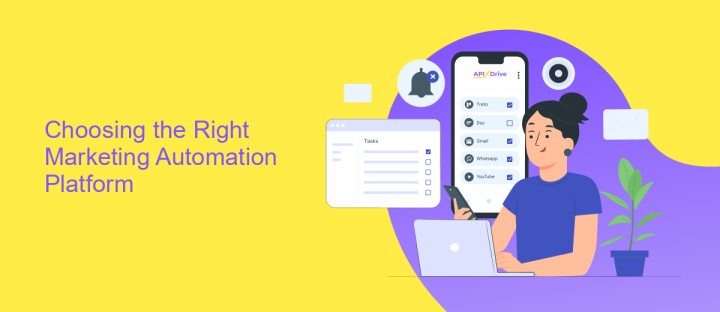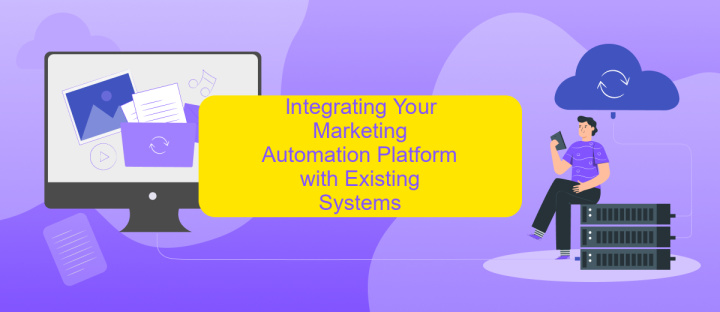Set Up Marketing Automation Platform
In today's fast-paced digital landscape, setting up a marketing automation platform is essential for businesses aiming to streamline their marketing efforts and enhance customer engagement. By automating repetitive tasks and personalizing communication, companies can not only save time and resources but also drive more effective and targeted campaigns. This article will guide you through the essential steps to successfully implement a marketing automation platform and maximize its potential.
Defining Your Marketing Automation Goals and Objectives
Before diving into marketing automation, it's crucial to clearly define your goals and objectives. This foundational step ensures that your efforts align with your broader business strategy and deliver measurable results. Start by identifying the key outcomes you wish to achieve, whether it's increasing lead generation, improving customer retention, or enhancing engagement across channels.
- Enhance lead nurturing processes to convert prospects into customers.
- Automate repetitive tasks to increase team efficiency and productivity.
- Improve customer segmentation for more targeted and personalized campaigns.
- Track and analyze customer behavior to gain actionable insights.
- Boost ROI by optimizing marketing spend and resource allocation.
By setting clear objectives, you can effectively measure the success of your marketing automation efforts. This clarity helps in selecting the right tools and features that align with your business needs. Regularly revisiting and adjusting these goals ensures that your marketing automation strategy remains dynamic and responsive to market changes, ultimately driving growth and success for your organization.
Choosing the Right Marketing Automation Platform

Choosing the right marketing automation platform is crucial for streamlining your marketing efforts and maximizing ROI. Start by identifying your business needs and objectives. Consider the size of your business, the complexity of your marketing campaigns, and the level of personalization required. Evaluate platforms based on their features, such as email marketing, lead scoring, CRM integration, and analytics capabilities. It's essential to select a platform that aligns with your current goals and can scale with your business as it grows.
Integration capabilities are another critical factor. Ensure the platform can seamlessly integrate with your existing tools and systems, such as CRM, social media, and e-commerce platforms. ApiX-Drive is a valuable resource for setting up integrations, offering a user-friendly interface to connect various applications without the need for coding. Additionally, consider the platform's ease of use, customer support, and pricing structure. A thorough evaluation will help you choose a marketing automation platform that enhances efficiency and drives success in your marketing initiatives.
Integrating Your Marketing Automation Platform with Existing Systems

Integrating your marketing automation platform with existing systems is crucial for seamless operations and data consistency. This integration ensures that all your marketing efforts are aligned and that data flows smoothly between different platforms. By connecting your systems, you can enhance customer experiences, streamline operations, and improve decision-making processes.
- Identify key systems for integration, such as CRM, email marketing, and analytics tools.
- Evaluate API compatibility and data formats to ensure smooth data exchange.
- Develop a comprehensive integration plan that outlines steps, timelines, and responsibilities.
- Test the integration in a controlled environment to identify and address any issues.
- Monitor and optimize the integrated systems regularly to ensure ongoing efficiency.
By following these steps, you can effectively integrate your marketing automation platform with existing systems, maximizing the potential of your marketing efforts. This integration not only enhances operational efficiency but also provides valuable insights into customer behavior, enabling you to tailor your strategies for better engagement and conversion. Remember, successful integration is an ongoing process that requires regular monitoring and adjustments to adapt to evolving business needs and technological advancements.
Setting Up Key Automation Workflows

Implementing key automation workflows is crucial for maximizing the efficiency of your marketing automation platform. These workflows streamline repetitive tasks, allowing your team to focus on strategic activities. Begin by identifying the primary goals of your marketing campaigns, such as lead generation, nurturing, or customer retention.
Once the objectives are clear, map out the customer journey to determine where automation can add value. Consider touchpoints where automated responses or actions could enhance the customer experience. This planning stage is essential to ensure that workflows align with your overall marketing strategy.
- Lead Scoring: Automate the process of scoring leads based on their interactions and behaviors to prioritize follow-up actions.
- Email Nurturing: Set up automated email sequences to engage and nurture leads over time, delivering personalized content based on their interests.
- Behavioral Triggers: Implement triggers that activate specific workflows when a user performs a certain action, such as downloading a resource or visiting a pricing page.
After setting up these workflows, regularly review and optimize them to improve effectiveness. Analyze performance metrics to identify areas for enhancement and adjust the workflows to better meet your marketing objectives. Continuous refinement will ensure that your automation platform delivers optimal results.
- Automate the work of an online store or landing
- Empower through integration
- Don't spend money on programmers and integrators
- Save time by automating routine tasks
Testing, Analyzing, and Optimizing Your Marketing Automation
Testing your marketing automation involves running controlled experiments to identify what strategies yield the best results. Begin by setting clear objectives and KPIs for each campaign. Utilize A/B testing to compare different elements such as subject lines, content, and timing. This helps in understanding what resonates with your audience. Regularly review the data collected from these tests to ensure your strategies are aligned with your goals. Integrating a service like ApiX-Drive can streamline this process by automating data collection and analysis across multiple platforms.
Analyzing the results is crucial to optimizing your marketing efforts. Dive into metrics such as open rates, click-through rates, and conversion rates to gauge performance. Look for patterns and insights that can inform future campaigns. Optimization involves making data-driven adjustments to your strategies. This could mean tweaking your messaging, adjusting your segmentation, or refining your automation workflows. Continuous monitoring and optimization are key to maximizing the effectiveness of your marketing automation platform, ensuring you stay ahead in a competitive landscape.
FAQ
What is a marketing automation platform and why do I need it?
How do I choose the right marketing automation platform for my business?
What steps are involved in setting up a marketing automation platform?
How can I integrate my marketing automation platform with other tools?
What are some common challenges when implementing marketing automation, and how can they be overcome?
Apix-Drive is a simple and efficient system connector that will help you automate routine tasks and optimize business processes. You can save time and money, direct these resources to more important purposes. Test ApiX-Drive and make sure that this tool will relieve your employees and after 5 minutes of settings your business will start working faster.


